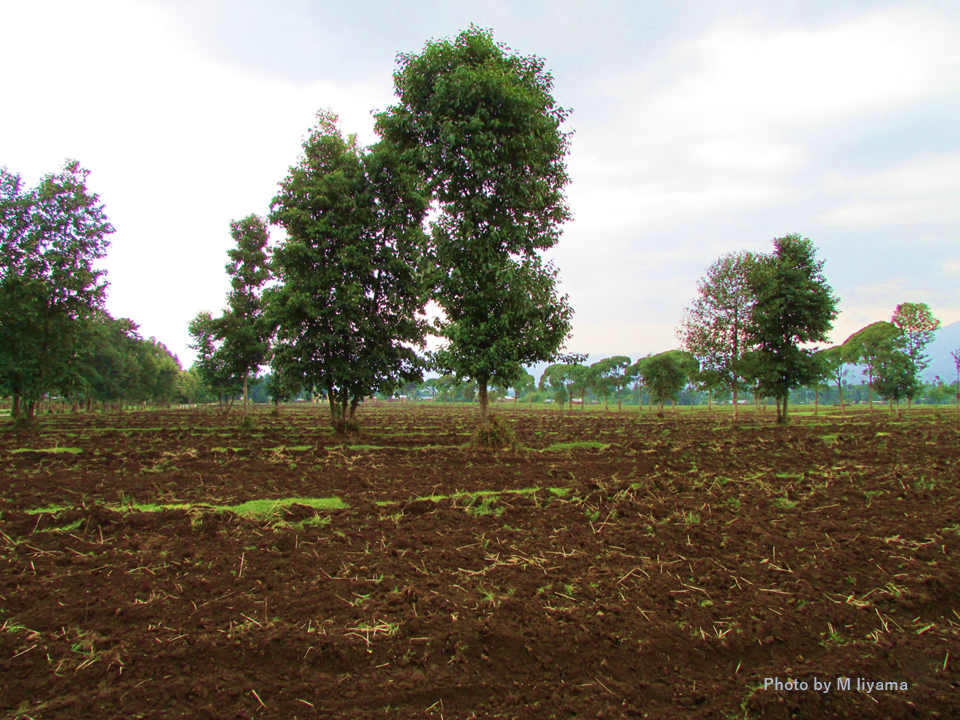Pick Up
712. The Need for Transboundary Policies to Conserve Soil Biodiversity

Soil biodiversity describes the diversity of all life forms in the soil.
It is estimated that a one-gram teaspoon of soil contains at least one billion bacterial cells, one million fungi, and hundreds of nematodes. In addition, all kinds of living organisms, from arthropods such as insects, spiders, worms, and moles to mammals, contribute to soil diversity. Protecting soil diversity leads to the maintenance of healthy and sustainable soil.
On the other hand, looking around the world, many factors such as urbanization, automation, disease outbreaks, natural disasters, and even war are causing changes in land use, and as part of these changes, the soil's ability to recover is declining. One example of how the world is connected in terms of soil health is that feed soybeans grown in Brazil are exported to Europe and China, resulting in excess nitrogen and other accumulations. As with all environmental issues, soil health and biodiversity conservation are global issues that transcend specific national and regional boundaries. Conservation of soil diversity requires comprehensive and inclusive rule-making that transcends national borders and cooperation among countries.
In many cases, the expression "biodiversity conservation" has been associated with the preservation of terrestrial species such as birds, butterflies, plants, and animals from extinction risk. In contrast, little attention has been paid to soil diversity. In its Soil Strategy 2030, the European Union, known for its commitment to the environment, calls for the restoration of soil health in Europe and beyond, with the ambition of achieving soil health across Europe by 2050, and for the first time acknowledges the importance of maintaining ecosystem services from healthy soils for future generations. It is also reportedly proposing the first comprehensive soil conservation law that recognizes the need to maintain ecosystem services from healthy soils for future generations. Maintaining soil health is important for a sustainable society, but how to achieve it is the challenge. And the challenge is how to measure soil health in order to realize it. Here are some excerpts from the article Soil biodiversity needs policy without borders published in Science, providing an overview of the challenges facing soil biodiversity conservation.
~Difficulties in creating indicators~
Distinct from mere soil quality - which refers primarily to chemical factors and the characteristics necessary to maintain crop yield production - soil health is a more holistic concept that must encompass all the ecosystem services provided by the soil. services provided by the soil. Measuring soil health requires a great deal of information about the biological, chemical, and physical properties of the soil, but measuring these indicators is beyond the control of the individual landowner. Just one handful of soil contains more than 5,000 taxa, including viruses, bacteria, archaea, fungi, protists, nematodes, earthworms, and other invertebrates that feed on plants and organic sediments and form an underground food web. The EU Soil Strategy has launched a "test your soil for free" initiative for producers. While these efforts are commendable, many of the tests are not standardized. Even if soil types have been studied at the regional level, soil conditions are extremely diverse, even at the local level, such as in the field. Furthermore, with chemical fertilizers, pesticides, and mechanical tillage being used to cultivate high-yielding varieties, a system is needed to evaluate soil health based on the complexity and function of the entire soil food web. The challenge is to propose simple indicators that capture this complexity.
~Difficulties in assessing soil biodiversity~
According to the Convention on Biological Diversity, biodiversity is defined as the variation of organisms from genes to ecosystems and landscapes, but in the case of soil biodiversity, it is difficult to apply the same clear classification to microbes as to plants and animals. Molecular identification techniques may make it possible to determine if elements of soil biodiversity are endangered, but too much is unknown about whether specific soil organisms should be included on the "red list"of endangered species. For example, a single soil organism plays an important function in nutrient cycling and is threatened by global warming, such as the bacteria-eating nematode (Scottnema lindsayae) in the glacial valleys of Antarctica.
~Promoting public understanding through the release of data~
Despite the challenges to soil biodiversity analysis described above, progress is being made. International organizations and universities have collaborated to release soil classification data, such as the Global Soil Biodiversity Atlas and Assessment, to the public, which has increased interest in soils. Although there is still room for discussion on how to observe and measure soil in the future, this has given momentum to important efforts for long-term data accumulation.
~Global collaboration in soil conservation~
As in the case of soybean production in Brazil, which was introduced at the beginning of this report, other countries can be affected by consumption activities in their own countries. Soil conservation in one region may lead to a loss of soil health in other regions. In a food system that is intricately intertwined with international trade, cross-border collaboration is needed to conserve soil diversity.
~Protecting what we have now~
Soil biodiversity conservation efforts are in their infancy, with many uncertainties, but it is vital to protect the soil that is under our feet now and begin to work toward its restoration. Companies must shift to business models that emphasize long-term sustainability over short-term profits, and the government must come up with policies that will encourage them to do so. A sustainable business model cannot be established on dead soil. Hence, protection of soils, soil biodiversity, and soil health should be high on the policy priority list of every country and region.
Reference
Van der Putten WH, et al. (2023) Soil biodiversity needs policy without borders. Soil health laws should account for global soil connections, SCIENCE, 5 Jan 2023. Vol 379, Issue 6627, pp. 32-34 https://www.science.org/doi/10.1126/science.abn7248
Contributors: Solongo TUMUR and IIYAMA Miyuki (Information Program)
